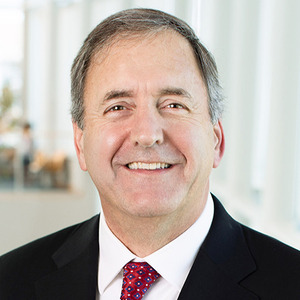
Vance Thompson
Power List Profile
Refractive Surgeon Founder, Vance Thompson Vision; Professor of Ophthalmology, University of South Dakota, Sanford School of Medicine, South Dakota, USA
What is an interesting or little-known fact about you?
I love to drum and play the piano. I used to be better. Someday I dream of doing both more again.
What’s been the biggest breakthrough in ophthalmology/your specific field over the last 10 years?
As a refractive surgeon, there have been many advancements I have had the honor of experiencing but I feel the biggest breakthrough in the past 10 years has been the Light Adjustable Lens (LAL). The ability to change the power of a lens implant in situ to meet our patient’s refractive goals is the same reason the excimer laser brought corneal adjustability to nail our patient’s desired refractive endpoint the first half of my career. What is even more fun is that I had the honor of being a principal investigator in the FDA monitored trials of both technologies and thus I had a peak into the cornea adjusting excimer and the optic adjusting LAL’s future. It was so exciting to be a part of both.
Is there a particular tool, technological advance, or instrument you would not have been able to live without over the past 10 years?
The gas permeable contact lens over refraction. I need a phoropter and a gas permeable contact lens to practice pure refractive surgery. I need to understand if there is any tear film, epithelial, or anterior stromal cause(s) of irregular astigmatism that is reducing best corrected image quality. If my manifest refraction patient reported image quality is reduced and I put a gas perm on and repeat it and the Mrx is now sharp, I know there is irregular astigmatism present and I need to measure and make the tear film happy, map the epithelium and make sure it is happy, and do a topography to make sure the anterior corneal stroma is happy. To a refractive surgeon who is passionate about optimizing image quality for their patients, the gas permeable contact lens over refraction is a must have technology to understand it’s power and utilize routinely.
Do you have any strong opinions with which the rest of the field tends to disagree?
I think eyecare in general has improved in its understanding of the importance of the tear film for therapeutic ocular surface health, but I still feel the most under-diagnosed cause of blur is still tear film blur, i.e. optical surface health (I just made that up! But I like that... optical surface health). The air/tear interface focusing lens is over twice the power of the average lens implant we put in. We are all fascinated with the implant and I believe we need to also be fascinated with the air/tear interface as the key to optimizing image quality. The parameters and standards we have for measuring the therapeutic aspect of the tear film need to be upgraded or further refined for the measuring and treating optical or visual aspect of the tear lens.
What would you like to see change in ophthalmology/your subspecialty over the next 10 years – and why?
I would like to see the eye care community truly understand the value, power and beauty of trifocality and how patient’s absolutely love it when everything else from front to back, refractive error to retina and optic nerve, is optimized. The rate of growth of presbyopia implants in our world is happening at a much slower rate than it should. The public wants this technology and I feel eyecare needs to increase its knowledge and comfort with modern day multifocality. Our cornea and crystalline lens use multifocality naturally to extend depth of focus. I would love to see more research into developing a lens more like our natural lens, one that utilizes both multifocality and accommodation. I don’t think the dream lens in the end will be just a multifocal or just an accommodating lens…I believe the dream lens implant will utilize both “range of vision” principles like our natural optical system.
Where do you predict ophthalmology/your subspecialty will be 10 years from now?
Corneal refractive surgery will grow at a slower rate than lens refractive surgery and image quality will become respected as a must to preserve and improve when choosing the best refractive procedure to recommend for a patient desiring spectacle independence. I also believe restoring reading range will not be just for patients seeking spectacle independence. Patients who are comfortable wearing glasses will desire implants that restore reading range so they can wear the single vision spectacles they wore in their 30s and not have to deal with the image jump and distortions that trifocals create.
Do you have any personal missions for the next 10 years?
I want to continue doing what I am doing and in addition I want to make music.
Who would you invite to your dream dinner party?
Jesus, my family, my best friends, and Winnie the Pooh… That would be a dream come true dinner for me, someone who deeply loves and appreciates the joy of time spent enjoying food, wine, and conversation around the dinner table.
